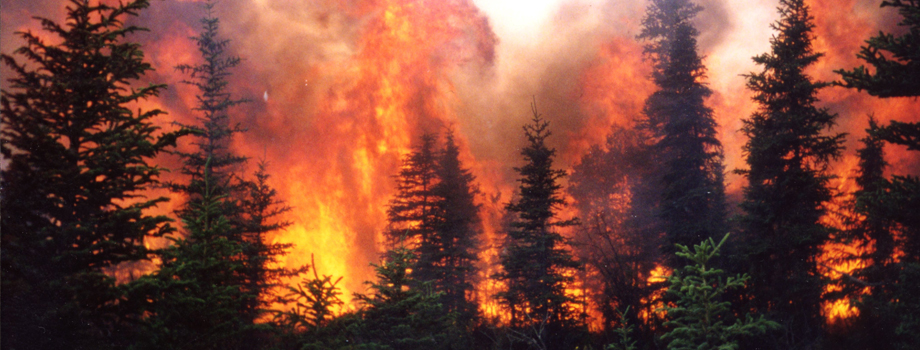
Wildfire in Alaskan black spruce forests.
Credit: Photo by Laona DeWilde
If carbon is currency, wildfires are the brokers; that is, they distribute carbon between land and air. In the short-run, fire emits carbon dioxide into the atmosphere. Over time, it also strengthens subsequent carbon uptake through plant regrowth. This exchange is like a natural Ponzi scheme – the carbon offsets from yesterday’s fires take up today’s emissions.
As severity and frequency of wildfires in North America continue to grow, the big question on LTER researchers’ minds was: How do recent, intense fires affect this carbon exchange between land and atmosphere? Using a modeling tool and long-term wildfire data, researchers found that although fire activity has increased, the continental carbon inputs and outputs are still in balance – at least for now.
Fires have both short- and long-term emissions and sinks. As fires burn, carbon dioxide is immediately released, creating a short-term increase of carbon emissions. However, in the long term, wildfires could create either carbon inputs or outputs, depending on how they affect microenvironmental changes, removal of the soil organic layer in burning, vegetation recovery, and carbon emissions from decomposition after fire. For example, the boreal forest was found to be a large source of carbon emissions for years after a fire, mostly because of its slow growth rates and loss of soil organic matter.
The LTER researchers looked at North America as a sum of four regions – Alaska, Continental United States, Canada, and Mexico. Each of these four regions have different environmental characteristics, including climate, vegetation, and land use. Environmental qualities determine if wildfires throughout the region produce carbon sinks or sources, while wildfire frequency and severity in the area determine the magnitude of carbon fluxes.
The next question is, will the carbon Ponzi scheme, brokered by wildfires, catch up with itself as more carbon is emitted and carbon offsets are used up? Although the future is uncertain, the robust modeling tool and long-term dataset that LTER researchers compiled will aid future studies in finding these answers.
, , and (2017), Contributions of wildland fire to terrestrial ecosystem carbon dynamics in North America from 1990 to 2012, Global Biogeochem. Cycles, 31, 878–900, doi:10.1002/2016GB005548.










